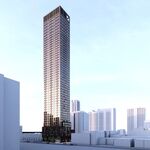I know this has been noted before many times and was part of the modelling for demand - there are many points along this line where you can see a lot of transfer volume. Starting in the current Weston to Kennedy you have the following either existing of future connections:
- GO at Weston
- GO at Caledonia (future)
- TTC at Eg West
- TTC at Yonge
- TTC at Don Mills (future)
- TTC at Kennedy
The way I see it going, there will be some demand to go long distances, but a lot of the vehicles will fill up then potentially empty at these stations and repeat along the line.
There's a good point there, but I still see some issues, especially with the current government in place:
With RER potentially not happening on many of the corridors, and fare integration not looking likely it is possible that the transfer points at Mt Dennis, Caledonia, and Kennedy will be about as busy as Downsview Park when they are built. If there is any ridership generated at those points, it'll be for people getting off GO from the suburbs heading to jobs along Eglinton Avenue.
TTC at Kennedy really doesn't count for Line 2, if anything, it'll fill up the crosstown trains a lot more because of demand from the Stouffville line and Line 3 (SRT/LRT if it's built as an LRT, Line 2 if the subway is extended)
Relief line north is not expected to be completed until at least 2041, meaning there's a 20 year gap between the opening of the crosstown and the opening of that transfer point. In that 20 year span, the 19km section of the line is expected to reach a ridership above 300K PPD before 2031, meaning there'll be a period of 10+ years of the line running at near Line 2 riders/km levels. The existing corridor sees 150K passengers per day, so a doubling within 5-10 years is very likely, it happened on Sheppard and is happening again on the TYSSE. There's also a good chance there will be a lot of development on Eglinton, expediting the future ridership growth.
Finally, there's the issue that people, like with Line 2, will just choose to continue transferring to Line 1 at Eglinton-Yonge. The majority of business is along that line, so it just makes the most sense for people to choose that transfer point even if they have to wait for 1 or 2 trains to pass through. It's like that in other countries, there's no reason why it may not end up like that here.
If things don't improve in terms of transit integration, I predict that line 5 will operate very similarly to line 2 in terms of passenger traffic patterns, meaning that it will pick up passengers from its suburban stations, and bring them to the 2 branches of line 1 for travel to downtown and other parts of the city. It also has the job of serving local traffic which makes it very difficult to account for everything.
With numerous extensions planned for this line, it'll be interesting to see how it ends up operating in the future.




